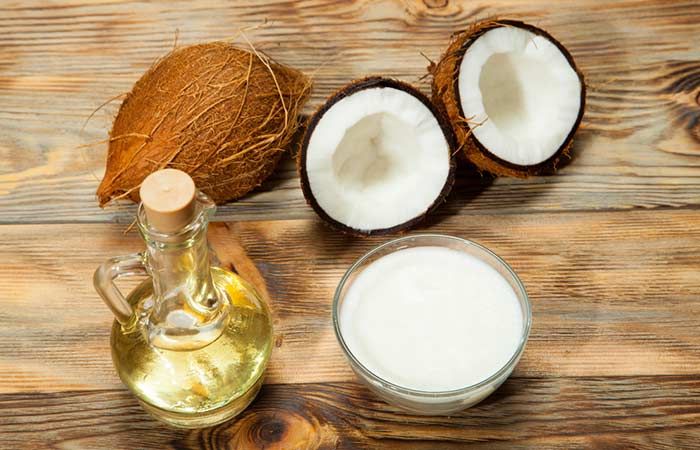In the quest for flawless, touchable skin, we’ve stumbled upon a game changer: skin softeners. Ever wondered why some people’s skin feels like velvet? The answer might just lie in these unsung heroes of skincare. Let’s dive into the world of skin softeners and discover how they can transform your skincare routine.
What Exactly Is a Skin Softener?
Skin softeners are specialized skincare products designed to improve the texture and feel of your skin. Unlike moisturizers that focus primarily on hydration, skin softeners work to smooth and refine the skin’s surface.
They’re the secret weapon for those seeking that coveted baby soft feel.
Key characteristics of skin softeners:
- Lightweight formulation
- Quick absorption
- Focus on texture improvement
- Often oil free
The science behind skin softening is fascinating. These products work by penetrating the outer layers of the skin, called the stratum corneum.
They fill in microscopic gaps between skin cells, creating a smoother surface. This process not only improves the feel of your skin but also enhances its appearance by reducing the visibility of fine lines and rough patches.
Types of Skin Softeners
Not all skin softeners are created equal. Let’s break down the main categories:
- Chemical based softeners: These typically contain ingredients like alpha hydroxy acids (AHAs) or beta hydroxy acids (BHAs). They work by gently exfoliating the skin’s surface, promoting cell turnover.
- Natural and organic options: For those preferring a more natural approach, ingredients like aloe vera, shea butter, and various plant oils can provide effective softening properties.
- DIY skin softening solutions: Homemade options often incorporate kitchen staples like honey, oatmeal, or avocado.
Here’s a quick comparison table:
| Type | Key Ingredients | Best for | Considerations |
| Chemical based | AHAs, BHAs, Urea | Quick results, acne prone skin | May cause irritation in sensitive skin |
| Natural/Organic | Plant oils, Shea butter, Aloe vera | Sensitive skin, eco conscious consumers | May have shorter shelf life |
| DIY | Honey, Oatmeal, Avocado | Budget friendly, customizable | Requires more time and effort |
Key Ingredients in Effective Skin Softeners
The magic of skin softeners lies in their ingredients. Let’s explore the key players:
Emollients: The Smoothing Agents
Emollients are the workhorses of skin softeners. They fill in the spaces between skin cells, creating a smooth surface. Common emollients include:
- Squalane
- Jojoba oil
- Dimethicone
Humectants: Moisture Locking Powerhouses
Humectants attract water to the skin, keeping it hydrated. This added moisture contributes to the overall softness. Popular humectants are:
- Glycerin
- Hyaluronic acid
- Propylene glycol
Occlusives: Creating a Protective Barrier
Occlusives form a protective layer on the skin, locking in moisture and other beneficial ingredients. Examples include:
- Petrolatum
- Beeswax
- Lanolin
Natural Oils and Butters: Nature’s Skin Softeners
Many natural ingredients have inherent softening properties:
- Coconut oil
- Shea butter
- Argan oil
How Skin Softeners Work Their Magic
The process of skin cell renewal is key to understanding how softeners work. Our skin naturally sheds dead cells and produces new ones, but this process can slow down due to age, environmental factors, or poor skincare habits.
Skin softeners accelerate this renewal process by:
- Gently exfoliating dead skin cells
- Promoting new cell growth
- Improving skin barrier function
By penetrating the skin’s layers, these products work from within to improve texture and appearance. Over time, consistent use can lead to significant improvements in skin softness and overall health.
Who Can Benefit from Skin Softeners?
The beauty of skin softeners lies in their versatility. They’re not just for those with perpetually dry skin. Here’s who can benefit:
- Dry skin sufferers: An obvious choice, as softeners provide much needed relief and nourishment.
- Aging skin concerns: By improving texture and hydration, softeners can minimize the appearance of fine lines.
- Rough patches and problem areas: Elbows, knees, and heels often need extra attention.
- Men vs. women: While marketing often targets women, men can equally benefit from softer, healthier skin.
“Skin softeners are the unsung heroes of skincare. They work quietly behind the scenes, improving skin texture and health in ways that go beyond mere hydration.” Dr. Emily Stern, Dermatologist
Incorporating Skin Softeners into Your Skincare Routine
Timing is everything when it comes to skincare. Here’s how to make the most of your skin softener:
- When to apply:
- Morning: For all day softness
- Night: To work in tandem with your skin’s natural repair cycle
- Both: For maximum benefits (if your skin tolerates it)
- Layering with other products:
- Cleanse
- Tone (if part of your routine)
- Apply skin softener
- Follow with moisturizer and/or sunscreen
- Frequency of use:
- Start with once daily
- Gradually increase to twice daily if needed
- Listen to your skin it’ll tell you what it needs
Remember, consistency is key. You won’t see dramatic results overnight, but with regular use, you’ll notice a significant improvement in your skin’s texture and feel.
Potential Side Effects and Precautions
While skin softeners are generally safe, it’s important to be aware of potential issues:
Allergic reactions and sensitivities:
- Always patch test new products
- Look out for redness, itching, or burning
Overuse and its consequences:
- Can lead to clogged pores
- May disrupt natural oil production
Patch testing: Why it’s crucial
- Apply a small amount to your inner arm
- Wait 24 hours
- Check for any adverse reactions
Choosing the Right Skin Softener for Your Skin Type
Not all skin is created equal, and neither are skin softeners. Here’s a guide to help you choose:
Oily Skin Considerations
- Look for oil free formulations
- Opt for gel based softeners
- Ingredients to seek: Salicylic acid, niacinamide
Dry and Sensitive Skin Needs
- Choose creamy, rich formulas
- Avoid fragrances and harsh chemicals
- Beneficial ingredients: Ceramides, hyaluronic acid
Combination Skin Solutions
- Use different products for different areas
- Consider lightweight, balancing formulas
- Key ingredients: Jojoba oil, glycerin
Acne Prone Skin Precautions
- Non comedogenic is a must
- Look for exfoliating properties
- Helpful ingredients: Tea tree oil, witch hazel
DIY Skin Softening Treatments
For the DIY enthusiasts, here are some home recipes to try:
- Honey and Oatmeal Mask
- Mix 2 tablespoons of honey with 1 tablespoon of ground oatmeal
- Apply to face, leave for 15 minutes, then rinse
- Avocado and Olive Oil Blend
- Mash ½ ripe avocado with 1 teaspoon olive oil
- Apply to rough areas, leave for 20 minutes, then wash off
- Coconut Oil Night Treatment
- Apply a thin layer of pure coconut oil before bed
- Rinse in the morning for super soft skin
Cautions for homemade solutions:
- Always do a patch test
- Use fresh ingredients
- Don’t store homemade products for too long
The Environmental Impact of Skin Softeners
As we care for our skin, we must also consider our planet. Here’s how to make eco friendly choices:
Eco friendly options on the market:
- Look for biodegradable formulas
- Choose products with minimal packaging
- Support brands with sustainability initiatives
Microplastics and harmful ingredients to avoid:
- Polyethylene (PE)
- Polypropylene (PP)
- Polyethylene terephthalate (PET)
Sustainable packaging initiatives:
- Recycled and recyclable materials
- Refillable containers
- Plastic free options
Expert Tips for Maximizing Skin Softener Benefits
To get the most out of your skin softener, consider these expert recommendations:
- Combine with exfoliation: Gentle exfoliation before applying a softener can enhance absorption and effectiveness.
- Stay hydrated: Drinking plenty of water supports overall skin health and enhances the effects of topical products.
- Adjust your routine seasonally: Your skin’s needs change with the weather. Be prepared to switch products as seasons change.
- Don’t neglect your body: Skin softeners aren’t just for your face. Pay attention to rough areas like elbows and knees.
- Be patient: Visible improvements can take 4-6 weeks of consistent use.
Debunking Skin Softener Myths
Let’s clear up some common misconceptions:
- Myth: All skin softeners are greasy. Truth: Many modern formulations are lightweight and non greasy.
- Myth: Natural always means better. Truth: Both natural and synthetic ingredients can be effective and safe when formulated correctly.
- Myth: More application equals softer skin. Truth: Overuse can lead to clogged pores and irritation. Follow recommended usage guidelines.
The Future of Skin Softeners
The skincare industry is constantly evolving. Here’s what we might see in the future of skin softeners:
- Personalized formulations: AI driven skincare that adapts to your unique needs.
- Smart delivery systems: Products that release active ingredients over time or in response to environmental factors.
- Sustainable innovation: Waterless formulas and zero waste packaging to reduce environmental impact.
- Integration with tech: Wearable devices that work in tandem with skin softeners to optimize results.
Frequently Asked Questions
- Can I use skin softeners if I have acne prone skin? Yes, look for non comedogenic formulas with ingredients like salicylic acid.
- How often should I apply skin softener? Start with once daily, increasing to twice if needed and tolerated by your skin.
- Are expensive skin softeners always better? Not necessarily. Effectiveness depends on ingredients and formulation, not price.
- Can men use skin softeners? Absolutely! Skin softeners are beneficial regardless of gender.
- Will skin softeners make my skin more sensitive to the sun? Some ingredients may increase sun sensitivity. Always use sunscreen during the day.
Conclusion: Embracing the Soft Revolution
Skin softeners are more than just another step in your skincare routine they’re a gateway to healthier, more radiant skin. By understanding how they work and choosing the right product for your skin type, you can unlock the secret to that coveted silky smooth feel.
Remember, the journey to softer skin is a marathon, not a sprint. Be patient, consistent, and mindful of your skin’s unique needs. With the right approach, you’ll be well on your way to achieving your softest skin yet.
So go ahead, embrace the soft revolution. Your skin will thank you for it!



